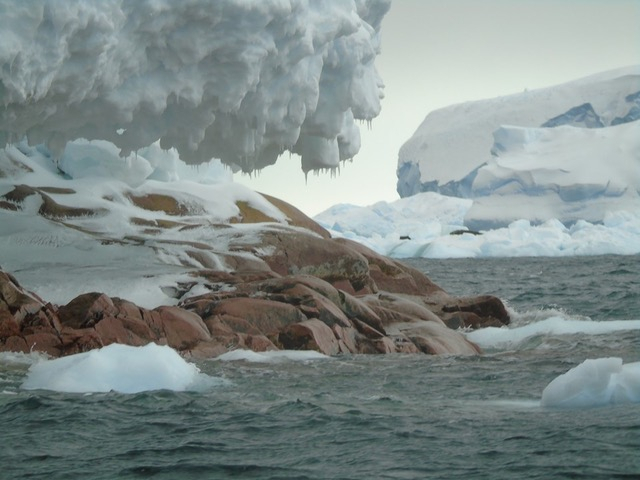What if global warming not only drowned landmass but also gave rise to new ones? As contradictory as it sounds, researchers studying the retreating of glaciers off the coast of Antarctica have discovered a new island—suggesting that climate change is leading to the transformation of the continent.
While aboard the RV Nathaniel B. Palmer, during an expedition earlier this month, researchers from the Thwaites Glacier Offshore Research (THOR) project discerned the new island while passing through the Pine Island Bay in Antarctica. The expedition was a part of the study of a fast-retreating glacier in West Antarctica—the Thwaites glacier, also known as the 'Doomsday Glacier'
The researchers from THOR have named the new island, Sif, who is the Norse goddess of fertility and family, and the spouse of the hammer-wielding Norse god of thunder and lightning, Thor. Sif is 1,240 ft across by 520 ft wide and is said to be roughly the size of the famous British monument, The Windsor Castle.

Ice kept the island a secret from satellites
Despite being large enough to be detected by satellites, the island remained hidden in plain sight, thanks to its ice cover. It is also likely that Julia Wellner, a marine geologist at the University of Houston in Texas and a principal investigator of THOR and her team are the first to have laid their eyes on the island as very few vessels venture deep into the south. While the researchers spotted the 634,400 sq ft island only recently, there is no saying how long it has remained above sea level owing to rapid climate change.
"After being the first visitors, we can now confirm that Sif Island is made of granite and that it is covered by remnant ice shelf, and a few seals," Wellner told The Dail Mail. She also tweeted pictures of Sif.
Earth's crust is pushing back
The retreating glaciers in West Antarctica could offer some explanation with regards to the emergence of once submerged landmasses. "As glaciers have retreated in West Antarctica, they have released the pressure on Earth's crust, allowing it to rebound and rise," explained Lindsay Prothro, a glacial geologist at Texas A&M University-Corpus Christi, in a statement.
Samples procured from the island may aid the researchers in understanding the pace at which the continent is lifting and also enable the designing of behavioural models for other glaciers in the vicinity.
Will the ice sheet fall apart faster or rather be held in place?

Decreasing pressure on the earth's crust may worsen the loss of ice sheet, or, conversely, keep them in place deliberate the researchers. "Rapid rebound could increase stress on the remaining ice sheet, causing it to break apart more quickly," said Lauren Simkins, a glacial geologist at the University of Virginia in Charlottesville.
However, the rising of the continental shelf may also lead to keeping the glaciers in place, thereby adding to their stability and de-accelerating their runoff into the sea. According to Simkin, a real-world case study could be made of the island.
Not an unknown phenomenon, yet research possibilities are many
Paul Cutler, a programme director in glaciology at the US National Science Foundation in Alexandria, Virginia, explained that rising of islands is not unheard of. "New islands emerging as ice sheets retreat is not particularly surprising," said Cutler.
The Canadian Arctic and Greenland have sprung up new islands in recent years. Nevertheless, Cutler averred that the discovery of Sif provides an opportunity to compile the geological history of a region on Earth that demands extensive study.

The study could provide new insights
While Cutler stressed on the need to study the region, Simkins expressed excitement over the insights that the examination of the island could provide. "This one island could hold a lot of clues," she said.
Wellner also added that one of the primary priorities of the team is to survey Sif. However, an expedition to gather samples from the island's shoreline was hindered by bad weather initially. The Palmer will be making port only March 25. Therefore, it could take up to a month for even initial results to be available.









